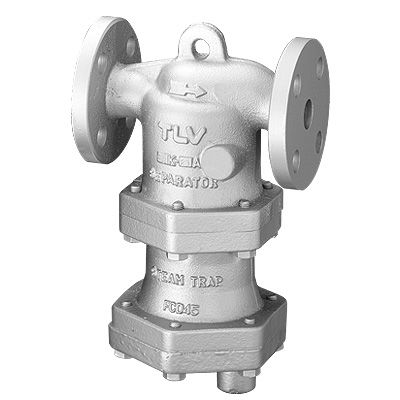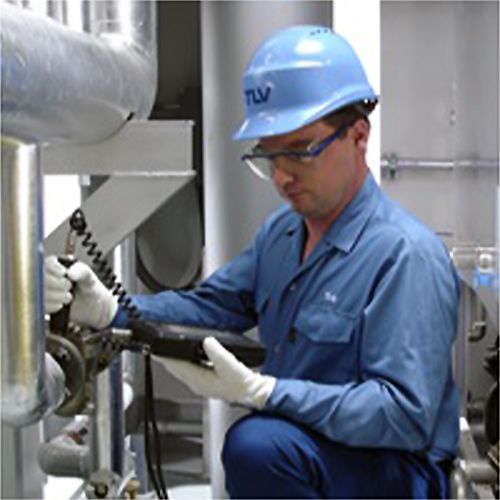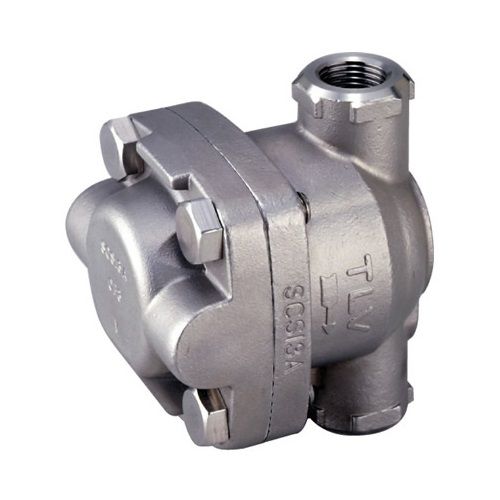Condensate Removal from Process Steam Lines

Condensate removal from process steam lines is the key to an efficient process steam system and in our experience, many businesses don’t take the issue seriously enough. We have all heard the term wet steam when describing a normal steam system required for heat transfer to processes and heat exchangers. When a steam boiler produces process steam there is always some entrained condensate within the steam, but the wetter it is the less effective it is at heat transfer. You would normally expect a boiler to produce process steam with around 5% wetness and what you need for effective heat transfer is dry saturated steam, so condensate removal must be effective and monitored.
You will find two states of condensate within your process steam system, they are entrained condensate which is water contained within the steam flow and non-discharged condensate which is water travelling below the steam flow. What we will discuss in the rest of this Blog Post are methods of condensate removal suitable for each state and how this increases heat transfer efficiency and reduces maintenance time thus reducing costs. For more information on effective condensate removal please continue to read this Blog by clicking read more or contact our technical sales team.
Condensate Removal Non-Discharged Condensate
Non-discharged condensate travels under the steam flow and is the result of heat loss within the steam main, heat transfer is increased greatly on uninsulated steam mains which can be reduced by around 90% by fitting 40mm Rockwool foil-backed lagging. Non-discharged condensate removal can only be removed by installing dirt pockets fitted with effective and efficient steam traps; in addition, the dirt pockets and steam traps should be correctly sized and installed.
The first consideration is the dirt pocket itself, in most cases should be line-sized, measure 500mm from the centre of the steam main to the base of the pocket, the steam trap outlet should have a fall achieved using two of 90° elbows and be situated 400mm centre to centre from the steam main. In addition, we also recommend a tapped blank flange be fitted to the bottom of the dirt pocket and that outlet be fitted with a drain off ball valve and plug. Dirt Pockets should be fitted every 30 to 50 metres taking into account elevation changes where a relay point dirt pocket should be fitted; the final dirt pocket on your steam system the line end dirt pocket should have an air eliminator fitted at the highest point and all the dirt pocket types are illustrated in the sketch provided.
Condensate Removal, Entrained Condensate
Entrained Condensate is contained within the steam flow and cannot be discharged by the previously discussed methods of condensate removal and in a normal saturated steam system impossible to remove it completely. But the more entrained condensate you remove the more efficient your heat transfer will be. To remove the majority of entrained condensate you must install a steam separator which comes in several forms but the two main types are baffle-type steam separators and cyclone separators.
In our experience, the more efficient of these is the TLV Cyclone Separator which will remove 98% of entrained condensate and can increase the heat transfer efficiency of your process by up to 9%. Condensate removal using a TLV DC3S Cyclone Separator is made even simpler because the unit has a built-in free-float steam trap. Traditional baffle separators do not have built-in steam traps and in addition, the TLV units are easily maintained have reusable seals and take up less space in a steam main, contact us to discuss your requirements with our excellent sales team.
Condensate Removal, Conclusion
 The key to consistent and efficient heat transfer from process steam is efficient condensate removal; this doesn’t just mean installing the right steam traps and or separators. It also means good practice in maintaining your steam system, recognising installation issues and of course, knowing your steam trap population is functioning.
The key to consistent and efficient heat transfer from process steam is efficient condensate removal; this doesn’t just mean installing the right steam traps and or separators. It also means good practice in maintaining your steam system, recognising installation issues and of course, knowing your steam trap population is functioning.  This is easily achieved by monitoring your steam traps either by annual professional surveys using the TLV TM5N Trapman (only available through TLV or their official distributors) or by using the excellent Pocket Trapman available to purchase through our website by following the highlighted link. We also recommend you clean the steam traps at least once a year including any strainers fitted internally as with most TLV steam traps or externally as with the majority of other manufacturers.
This is easily achieved by monitoring your steam traps either by annual professional surveys using the TLV TM5N Trapman (only available through TLV or their official distributors) or by using the excellent Pocket Trapman available to purchase through our website by following the highlighted link. We also recommend you clean the steam traps at least once a year including any strainers fitted internally as with most TLV steam traps or externally as with the majority of other manufacturers.
If you are lucky enough to have a steam trap population which are mainly TLV steam traps you will already be aware that they come with reusable Teflon seals which makes them easier to maintain as the gaskets don’t require replacing each time you open the steam trap body. The majority of other manufacturers use different types of gaskets which require replacement each time the steam trap is maintained; a situation they could easily resolve but are unlikely to consider the size of the spares market it creates. For more information on best practices on the subject of condensate removal or steam trap management please contact our technical sales team by clicking the highlighted link or telephone 0161 342 2225, we look forward to hearing from you.
Disclaimer: Information correct at the time of publishing (March 2016) but is subject to change. E&OE.
Register For An Account
Save & manage your details, access invoices, and enjoy a quicker shopping experience!